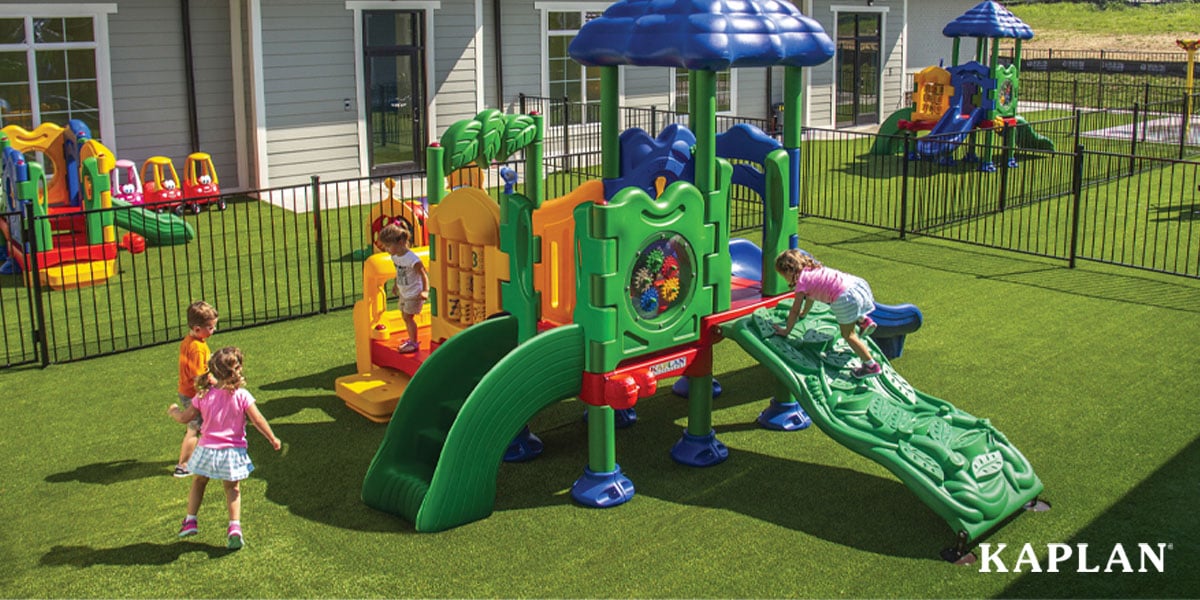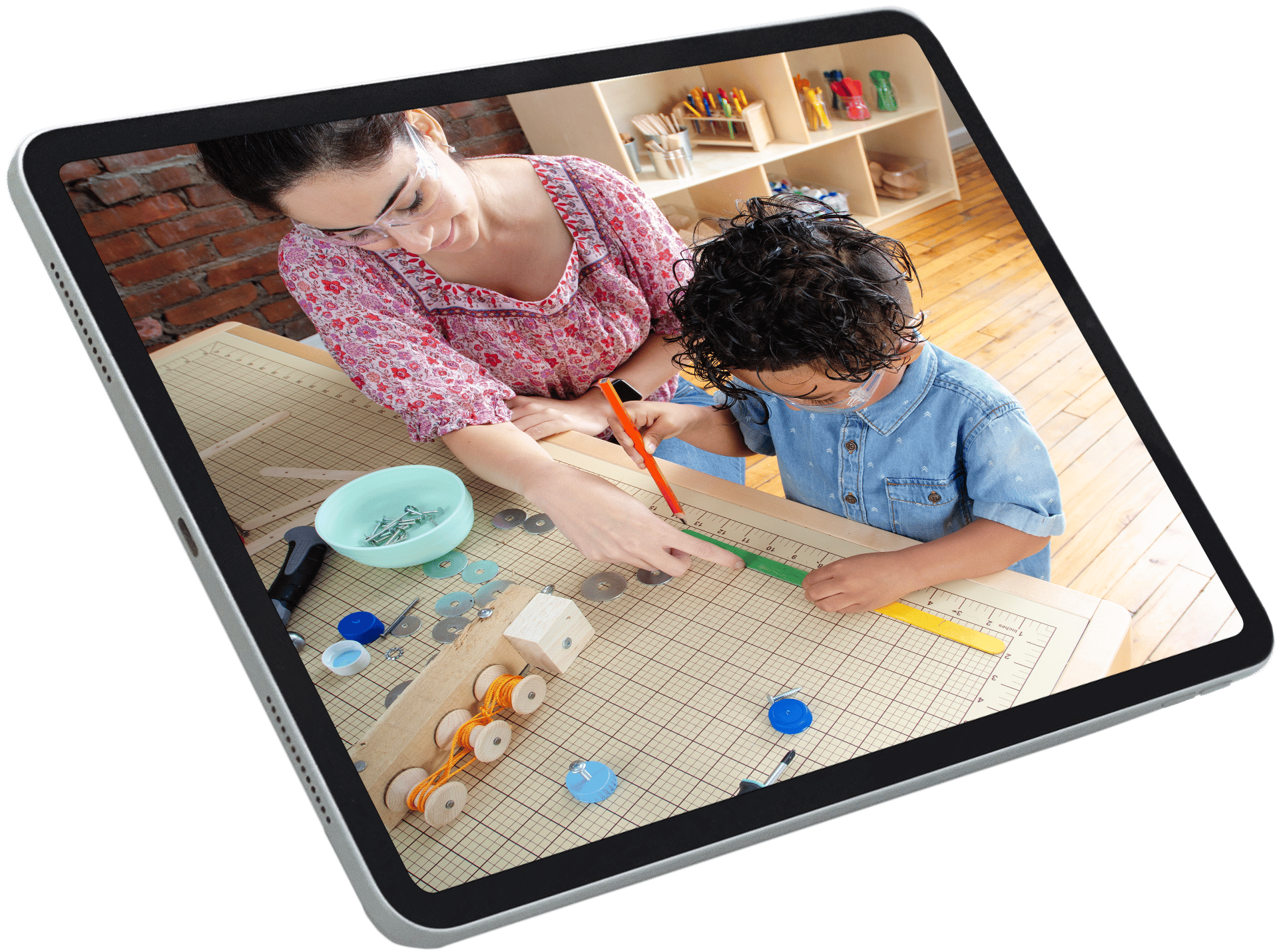Playgrounds are large, expensive investments for any school or childcare center. From the equipment to the surfacing, lots of time and money go into creating a playground that will positively impact children for many years.
While the equipment will suffer wear and tear over time, the surfacing is highly susceptible to damage from many sources including little feet, rain, snow, ice, and scorching sun. This means that it is important for you and your fellow educators to be intentional about caring for and maintaining your playground safety surfacing.
At Kaplan, we have helped educators manage and maintain playground surfacing for decades. In addition to the personalized service that our playground sales representatives provide, our online resources offer overviews of different kinds of surfacing and advice for choosing between them.
One type of surfacing that we support and sell is synthetic turf. In this article, we’ll show you 3 ways to care for synthetic turf that will ensure you get the most out of your investment.

How do I care for my playground’s synthetic turf?
Synthetic turf is a type of playground surfacing that uses a solid base layer (typically made of latex or polyurethane) and synthetic fibers to create the natural look of grass. Synthetic turf is explicitly designed to be durable, low maintenance, and long-lasting (according to another article on our website, warranties for synthetic turf are typically around 10 years). Still, there are some things you need to do regularly to make sure your synthetic turf stays safe and clean for its entire life span. Follow these best practices to ensure that you get your money’s worth on your turf.
Sweeping and raking
Every two months, use a soft-bristle broom to comb through and fluff the faux grass blades. This will remove matting, prevent compaction of the turf fibers, and keep the turf fibers upright. Upright fibers are important because they help maintain the turf’s airflow and cleanliness, which are essential for giving the turf the shock absorption necessary to keep children safe.
Sweeping and raking will also get rid of debris such as leaves, dirt, and sticks. Some types of debris can pose a tripping hazard and/or puncture the turf’s base. Punctures are harmful for turf because they enable water to get underneath the base. If too much water accumulates in the base, it will cause the turf to loosen and degrade.
Rinsing
Rinse your synthetic turf about once a week with a garden hose on a low-pressure setting. This will help get rid of dirt, pollen, and other substances that may trigger children’s allergies. Do not rinse the turf with high-pressure water (whether from a garden hose or a pressure washer) because higher pressures can displace the turf’s infill, loosen its seams, and puncture its backing.
Cleaning stains
A great way to prevent stains is to prohibit food, drinks (other than water), paint, and other stain-inducing substances on your playground. However, that is not always possible, and accidents do happen. If you encounter a stain that you want to remove from your synthetic turf, use a soft-bristle scrub brush to gently scrub it with a mild, child-safe dish soap. Let the soap soak for a minute and then rinse it away with the brush and clean water. For a more significant stain (such as a sticky drink), use a 50-50 mixture of water and white vinegar (which is nontoxic and child-safe).
Want to know how you can extend the life of other areas of your playground?
You now know how to do basic cleaning and maintenance on your playground's synthetic turf. If you want to know more about other types of playground maintenance that can prolong the life of your surfacing and equipment, read this article on our Learning Center for a comprehensive guide to keeping your playground as safe as possible for as long as possible. 

